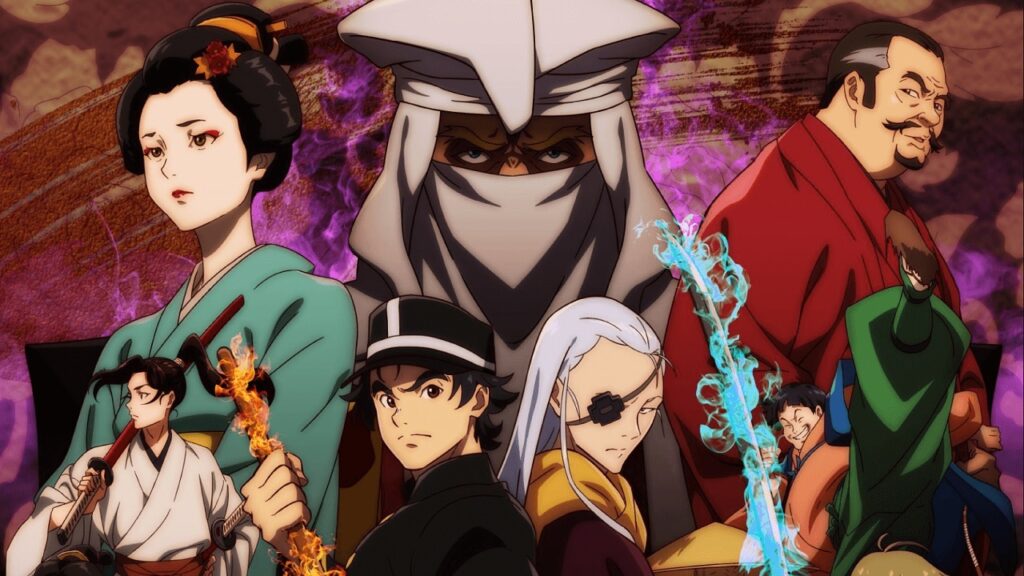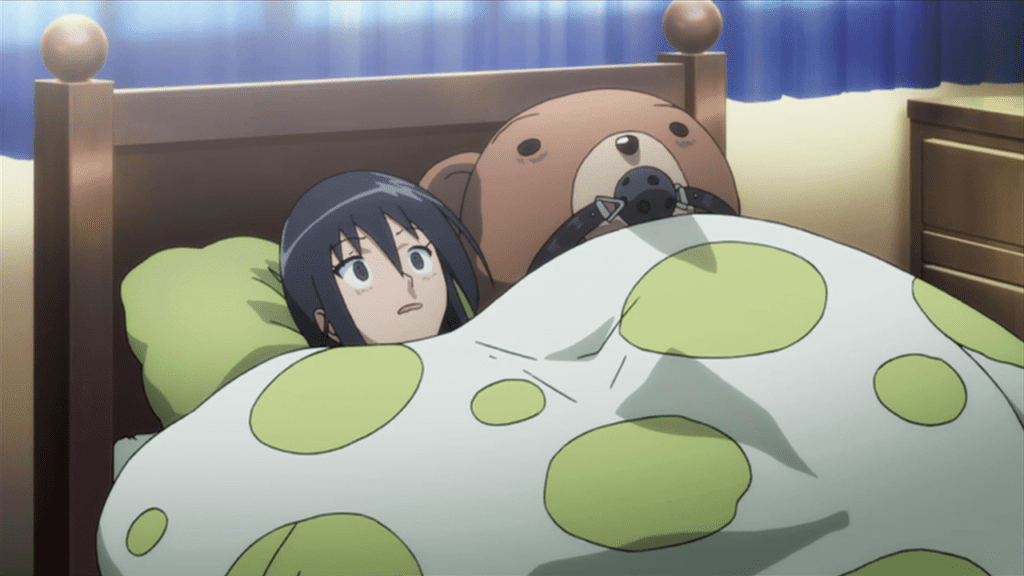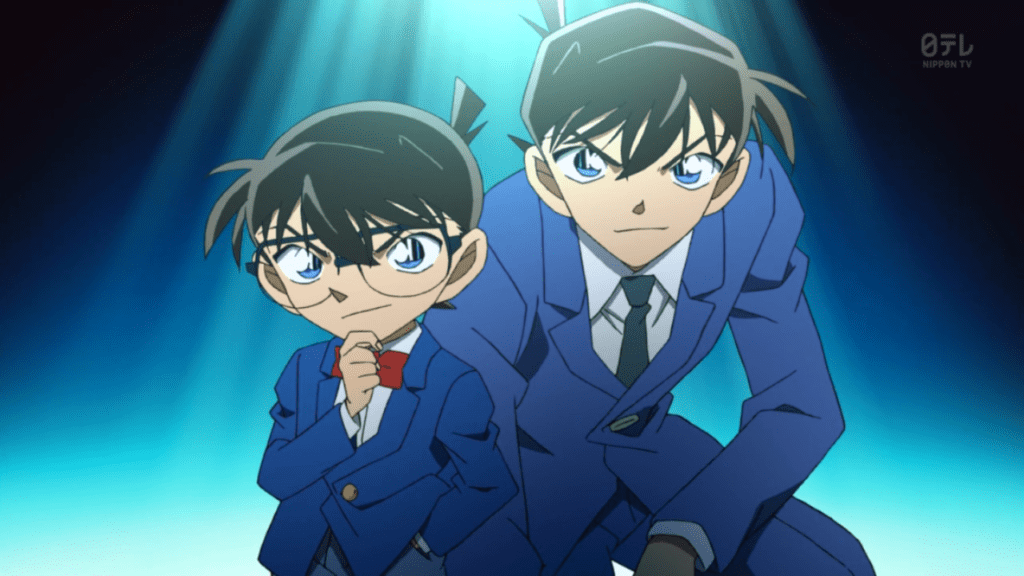Once a samurai until the warrior caste was disbanded, Shizuma Origasa began working as a rickshaw puller after the samurai rebellion in his home province of Aizu was put down. While dedicated to his work, he had another purpose of heading to the capital – to find his fiancee Sumie who went missing during the rebellion.
However, while working, Origasa is pulled into an plot against the government. While framed for an incident at first, he helps the police foil an assassination whereupon they recruit him into the police force.
Simultaneously, the Moriya yakuza clan welcomes in a talented mysterious swordsman named Kyoushirou Shuragami. With the Moriya clan the driving force in a plot to overthrow the government, Shuragami positions himself strategically to further his own plans.
These two stories slowly begin to intertwine as multiple plans are put into motion.
While possibly different for Japanese audiences, boy do Western anime fans not take to historical action anime unless it is dense with flashy action. Personally, I enjoyed the more grounded and surprisingly historically detailed depiction of Meiji politics. If you are looking for more anime recommendations like Meiji Gekken: 1874, head on down below.
Anime Like Meiji Gekken – 1874
For Fans of Revenge Stories
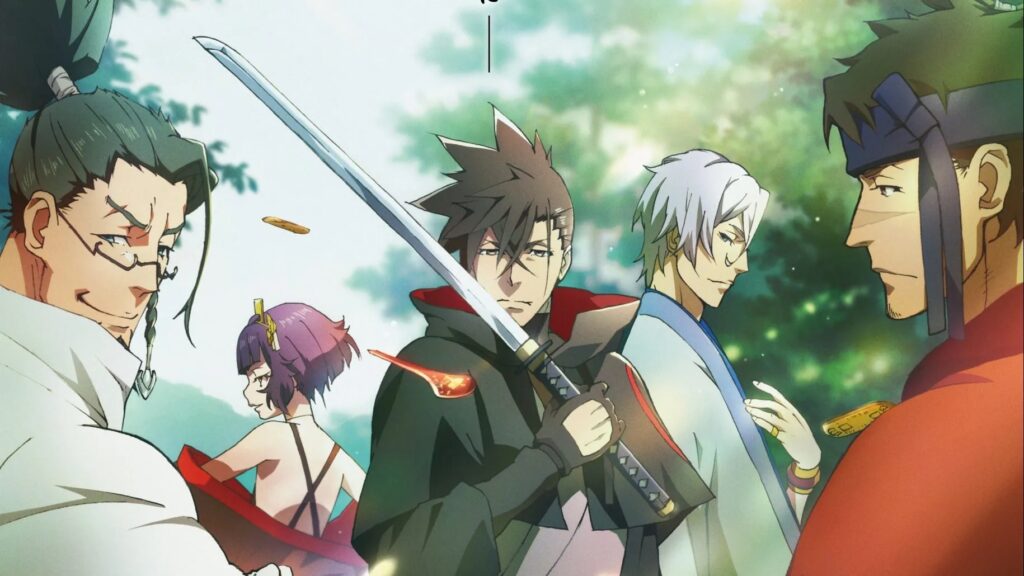
Revenger
After being tricked into killing his future father-in-law, samurai Raizou Kurima is riddled with guilt.
He swears vengeance on the lord that tricked him, and his path crosses with a merchant named Yuuen Usui who runs an underground group known as the Revengers. This group is actually a series of assassins who carry out the revenge of those who offer up a bitten gold coin.
As Raizou abandons his samurai principles to work with the Revengers, he becomes further entwined in their affairs.
Similarities Between Meiji Gekken and Revenger
- Both are historical Japanese action drama anime
- Both series follow a sort of adrift main character given new purpose
- Both series follow, at least in part, a group of assassins
- Both series explore conspiracies within or against the government
Differences Between Meiji Gekken and Revenger
- Revengers is set in the later Edo Period, 20-ish years prior to the Meiji Period. As such, the samurai class was still in place and foreign culture was less pervasive
- Revengers follows a group most comparable to Shuragami Kyoushiro’s strike team
- Revengers is more about eccentric fighters that take assassination jobs to offer people revenge than a larger story of intrigue like Meiji Gekken
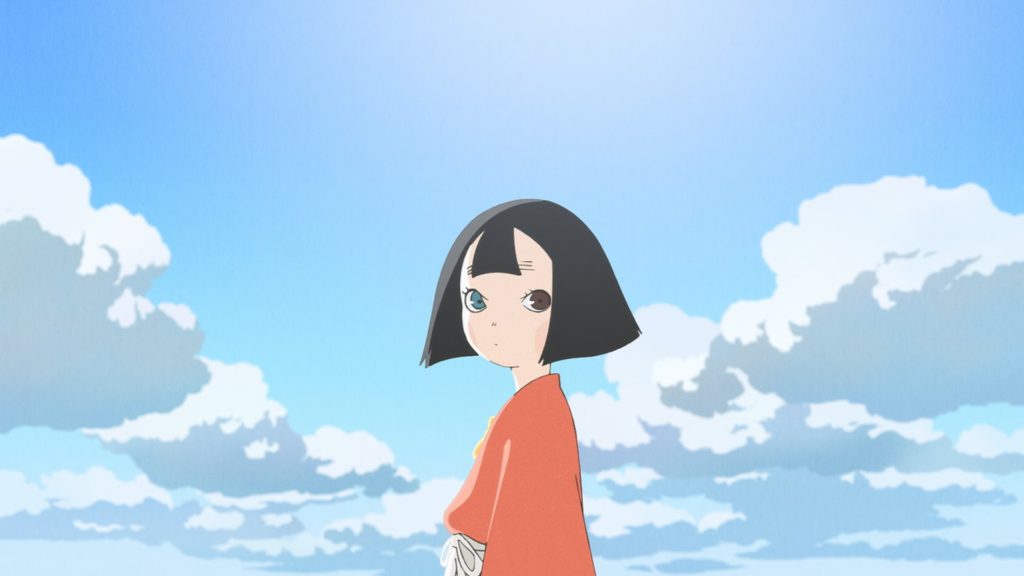
The Heike Story
The Taira Clan, also known as the Heike, have developed authority in Japan. When a young girl disrespects a representative of the clan, her father pays the price with his life.
Later, this girl, now adopting the name Biwa after the instrument her father played, approaches Taira no Shigemori, the eldest son of the Taira Clan leader.
To him, she reveals the power of her eye to see the future and portends the downfall of his clan. He reveals to her the power in his eye to see the wandering ghosts of the dead and, after learning of how her father died, offers to take her in in hopes that she can help him steer his clan away from disaster.
Similarities Between Meiji Gekken and The Heike Story
- Both series are historical Japanese drama anime
- Both series are fully focused on the building intrigue around two political factions that comes to a bloody head
- Both series surround plots against the government, explored through the lens of an more neutral observer who works with, but also dislikes, the government
Differences Between Meiji Gekken and The Heike Story
- The Heike Story takes place during the Genpei War, which is near 700 years prior to the Meiji Period in Meiji Gekken
- The Heike Story has a more experiential, but unique and interesting art style
- The “main” character in The Heike Story is more a neutral framing device to view the various characters than an actual character herself

Jouran: The Princess of Snow and Blood
With the Meiji Era continuing on well into 1931, the Tokugawa Shogunate is still in power.
With a newly discovered special resource known as “Dragon Vein,” Japan has propelled itself forward under the Tokugawa, but there are many who are unhappy, like the rebel group known as Kuchinawa.
By day, Sawa Yukimura runs a bookshop, but at night she seeks vengeance against a man that killed her family and tribe – the leader of the Kuchinawa, a man named Janome.
Similarities Between Meiji Gekken and Jouran
- Both series are set in the Meiji era
- Both series follow, at least in part, a woman secretly trying to assassinate a man in particular for what he did in the past
- Both series explore police investigating the intrigue
- Aboveboard work during the day, murderous intrigue at night
- Heaps of bloody action, intrigue, and a fairly large cast of characters playing it all out
Differences Between Meiji Gekken and Jouran
- Jouran has a touch of supernatural to the character abilities
- Jouran is an alternate history version of the Meiji Era
- The police are more than main characters in Meiji Gekken while Jouran explores a character whose motivations are more like Sumie’s
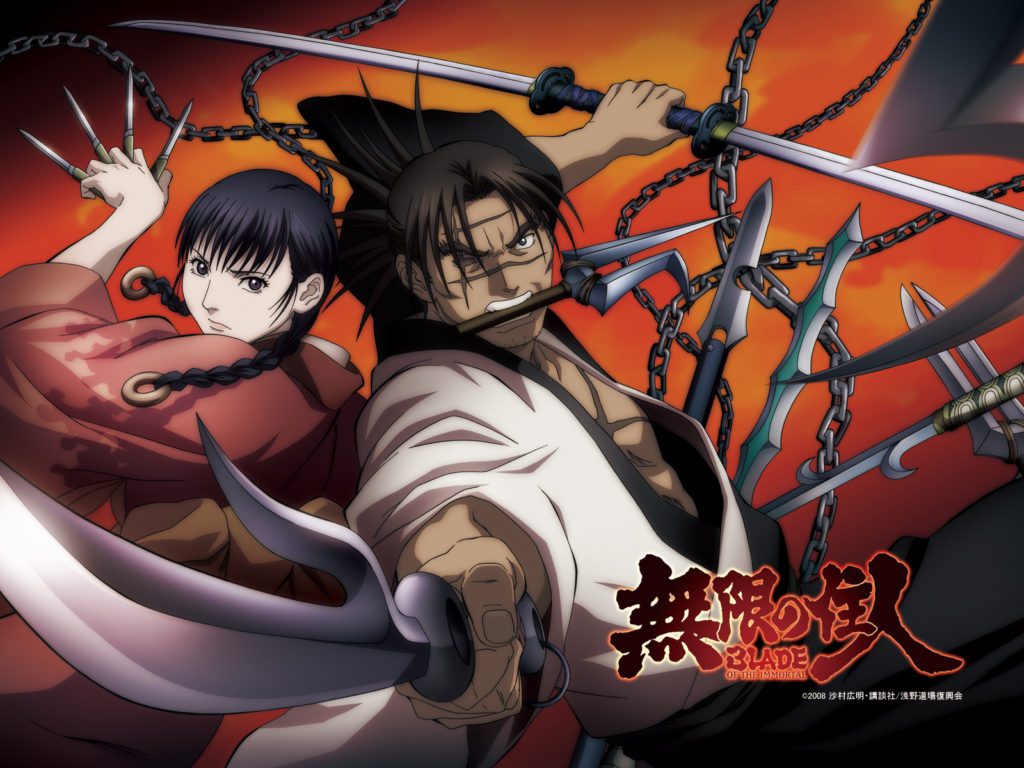
Blade of the Immortal
Manji is a swordsman who was cursed with eternal life. Growing upset with all the death he has created, he tries to get his mortality back by killing 100 evil men for every good person he had struck down.
On this journey, he meets a girl named Rin who seeks her own vengeance against a sword school that killed her family.
Together they journey, both trying to find their peace and prevent being consumed by revenge.
Similarities Between Meiji Gekken and Blade of the Immortal
- Both series are historical action anime
- Both have plots that are, in part, revenge focused
- Both series offer bloody sword fights against often unique opponents
Differences Between Meiji Gekken and Blade of the Immortal
- Blade of the Immortal has much more supernatural at play
- The main characters in Blade of the Immortal aren’t as morally complex as they are in Meiji Gekken
- Blade of the Immortal is set in the mid-Edo era, 50 to 100 years prior to the Meiji Period of Meiji Gekken
- Blade of the Immortal is more about a guy helping a girl get her revenge than the complicated political intrigue at play in Meiji Gekken
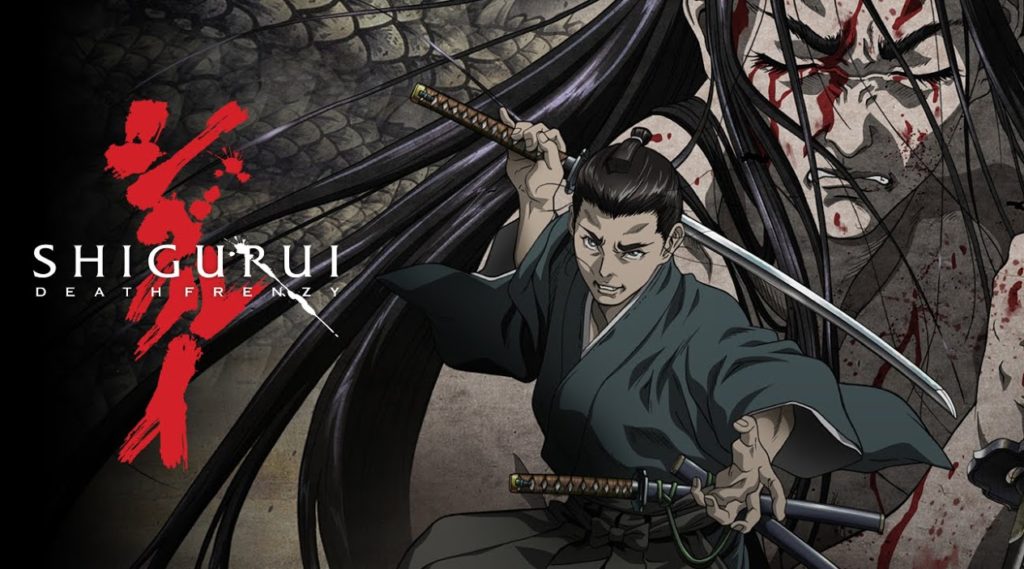
Shigurui
At the beginning of the Edo Era, a time of peace has descended over the land. The Lord Tokugawa Tadanaga, however, has decided to hold a fighting tournament with real steel instead of wooden swords.
Within this tournament, the one-armed Gennosuke and blind Seigen are set to face off.
As they were both disciples of Iwamoto Kogan, the greatest swordsman in all of Japan, both are determined to prove they are his rightful successor.
Similarities Between Meiji Gekken and Shigurui
- Both series offer a story about modern bloody events and the intrigue in the past that lead up to those events
- Both series highlight the political climate of the day through character stories
- Both series enjoy bloody action and intrigue
Differences Between Meiji Gekken and Shigurui
- Meiji Gekken is set in the early Meiji Period while Shigurui is set in the early Edo Era, 200 years prior
- Shigurui enjoys gore early and often
- Meiji Gekken presents the characters as complicated, but overall good people fighting for their ideals. By comparison, Shigurui portrays everyone as the worst possible people doing terrible things to each other
For Fans of Meiji Era Politics
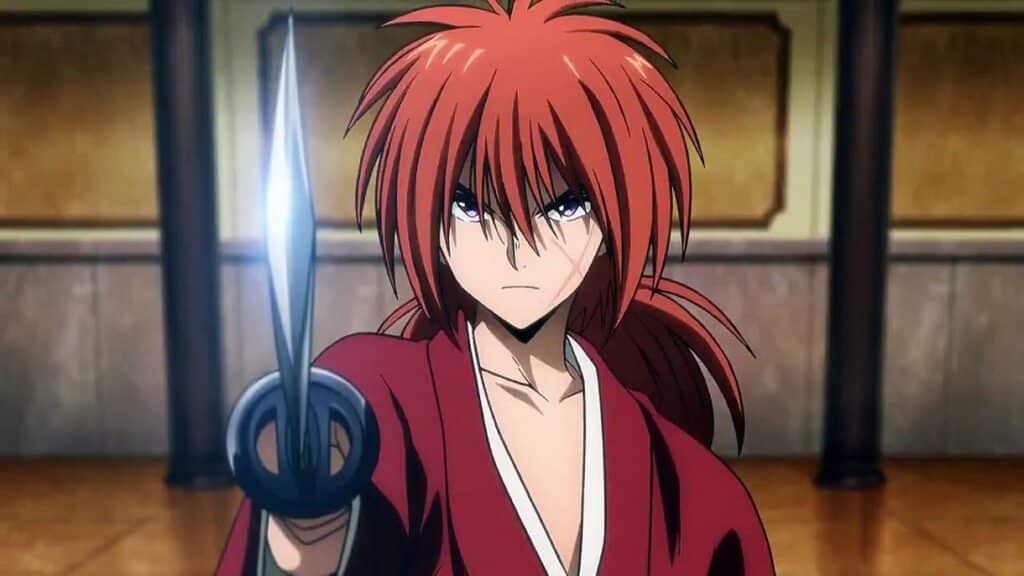
Rurouni Kenshin
During more violent times, there was the tale of a legendary manslayer, the Battousai. However, this assassin suddenly disappeared at the beginning of the Meiji Era, but his legend is still well-known.
Ten years later, unbeknownst to the people, the Battousai has abandoned his blood-stained ways and began living as a wanderer known as Kenshin, a goofball and pacifist that has vowed to never kill again.
After saving a sword dojo ran by a woman from an imposter posing as the Battousai, this wanderer stops his travel to temporarily stay.
Similarities Between Meiji Gekken and Rurouni Kenshin
- Both series explore the political climate in Meiji Era Japan through more personal character stories
- Both series offer action steeped in realistic combat
- The character stories are both politically-motivated and about intrigue from the past of several characters
Differences Between Meiji Gekken and Rurouni Kenshin
- Rurouni Kenshin is grounded action and on the more mature side, but still very much a shounen anime. This mean arc-based stories and some less mature story moments
- Rurouni Kenshin features more lighter, silly moments to break up the heavier arcs
- Rurouni Kenshin plays fast and loose with historical accuracy while Meiji Gekken is more dedicated to it
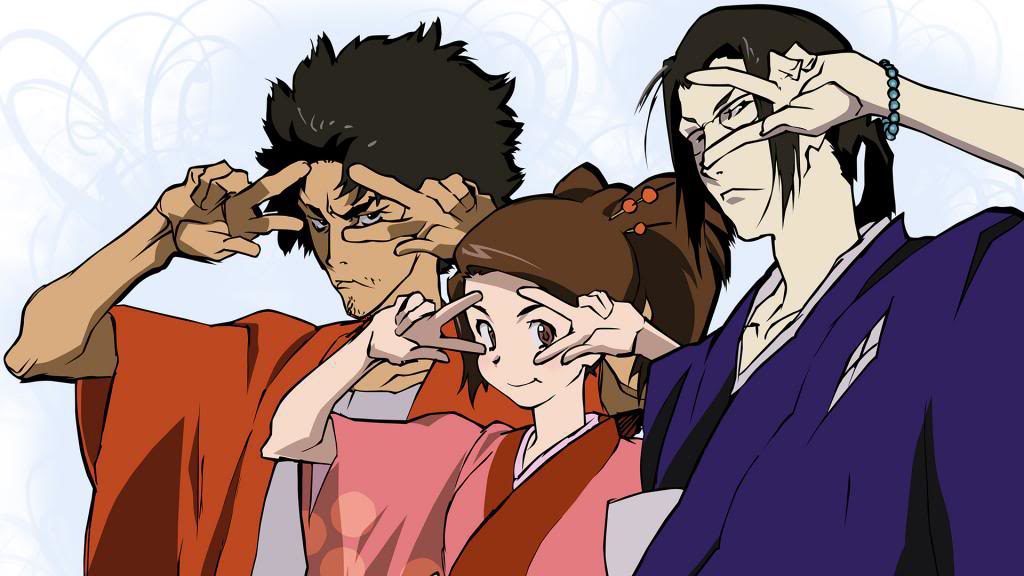
Samurai Champloo
Fuu is a young girl working as a waitress at a small tea house. Things are peaceful until one day she spills tea on a customer and is harassed by samurai.
Calling for help, a thuggish young rogue by the name of Mugen steps in only to pick a fight with another tightly wound samurai named Jin. In their fight, they end up destroying the shop and getting arrested.
After saving the two fighters from their execution, Fuu hires them as bodyguards to help her find a samurai that smells of sunflowers.
Similarities Between Meiji Gekken and Samurai Champloo
- Both series take place in the Meiji Period of Japan where foreign culture was melding with traditional Japanese culture and traditions
- Both series follow multiple different character stories all happening at the same time
- Both series offer a mix of morally good and morally black/gray characters whose values and motives are well explored
Differences Between Meiji Gekken and Samurai Champloo
- Samurai Champloo is framed as a road trip sort of story where the main characters stories are explored as they get caught up in small events that also detail the political climate of Japan as they travel
- Samurai Champloo definitely puts a lot more effort into animating and choreographing the combat
- No one is on the government’s side in Samurai Champloo
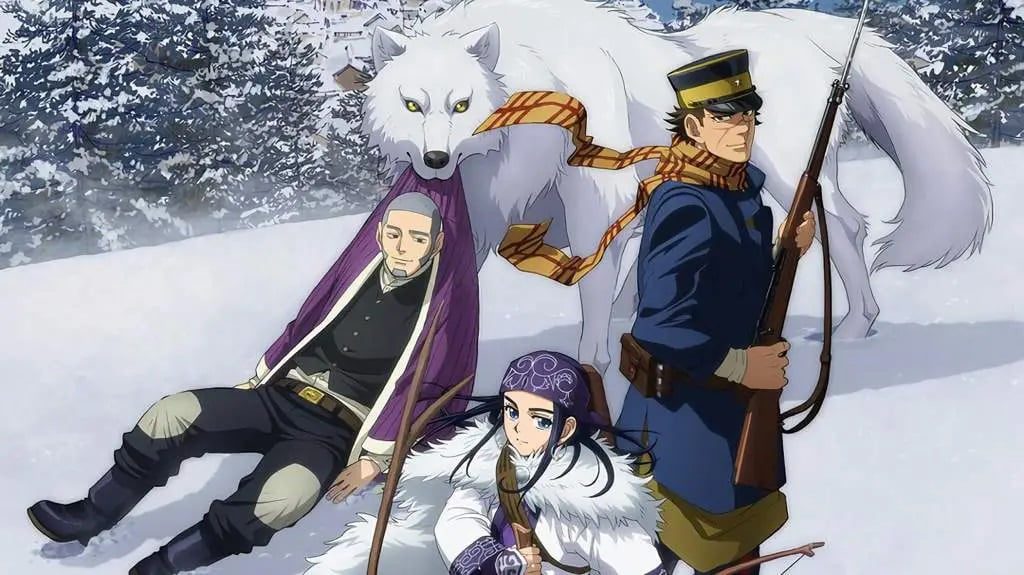
Golden Kamuy
After surviving the brutal Russo-Japanese war, Sugimoto gained the nickname “the immortal”. However, he now seeks the promise of gold to the north in Hokkaido in order to provide for the blind wife and infant son of his comrade who died in the war.
Yet, during his hunt, he hears the tale of a hidden stash of gold belonging to criminals with a map made out of human skin. Dismissing it as a tale at first, he soon finds that the man who told him the story has those very same map-like tattoos.
Now on a race with a native Ainu girl whose father was murdered for the gold, they try to make it to the stash before the criminals.
Similarities Between Meiji Gekken and Golden Kamuy
- Both series are character stories set in the Meiji Era
- Both offer more mature tales with adult characters and mature political intrigue
- The main characters were once soldiers/samurai, but are no longer
- The main characters get involved in the larger plot because they are using it to further their own personal missions
Differences Between Meiji Gekken and Golden Kamuy
- As Golden Kamuy is the longer series, it injects more moments of silly levity
- Golden Kamuy is set after the Russo-Japanese war, which is still the Meiji Era, but much later in the era
- Golden Kamuy is about an ex-soldier getting involved in a deadly treasure hunt that government officials also get involved in, which is a different sort of intrigue compared to Meiji Gekken
- Golden Kamuy is more gun fights than sword fights
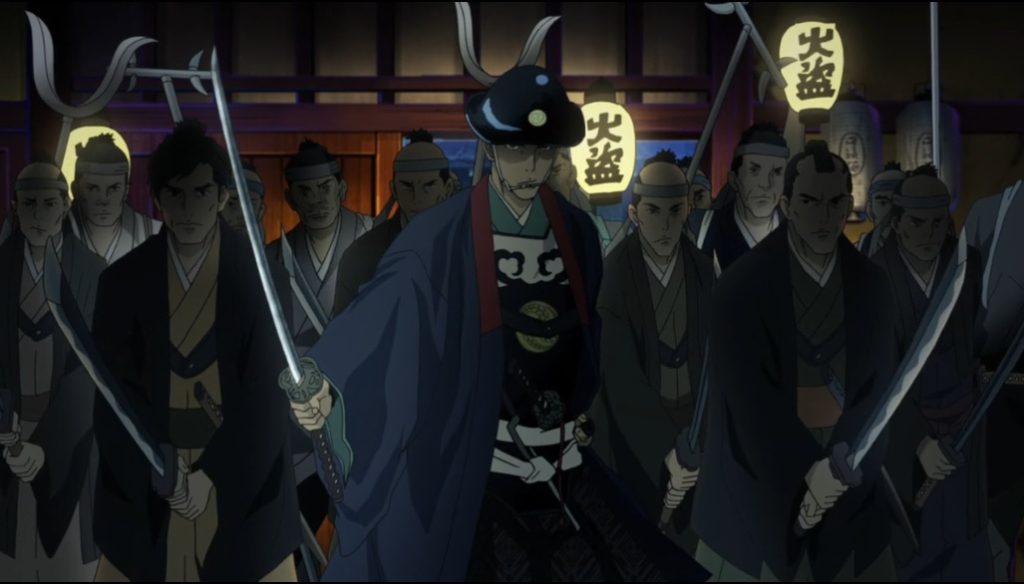
Onihei
Heizou Hasegawa’s blade skills may have others calling him Devil, but he puts those skills to work as a chief police officer who keeps the law in his region.
Similarities Between Meiji Gekken and Onihei
- Both series are mature historical dramas
- Both series follow main characters that are cops
- Both series have plots surrounding catching criminals and foiling plots against the government
Differences Between Meiji Gekken and Onihei
- Onihei takes place just over 100 years before Meiji Gekken
- The main character in Onihei is a very serious cop and not as forgiving as Origasa
- As a particularly long-running series, Onihei covers a wide variety of different cases instead of the singular event that Meiji Gekken focuses on
- The main character in Onihei lacks the a personal motivation outside of just doing his job well
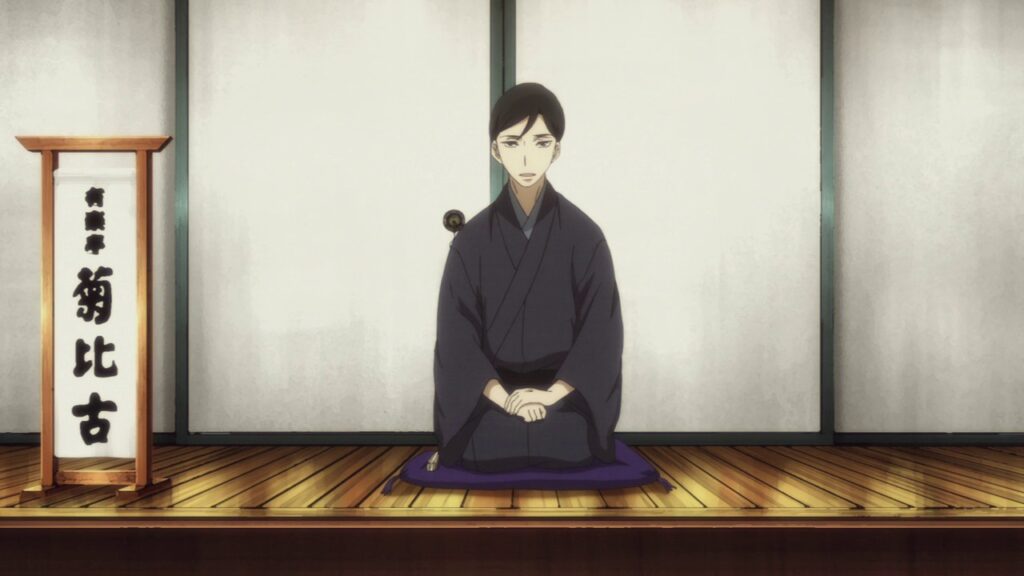
Shouwa Genroku Rakugo Shinjuu
Former yakuza member Yotarou is fresh out of prison and looking to keep his nose clean. In order to stay out of trouble, he aspires to the stage of Rakugo, a traditional Japanese form of comedic storytelling.
Inspired by a man he saw perform while incarcerated, he seeks out the man to mentor him, forcing the unwilling, but distinguished Yakumo Yuurakutei to take on his first apprentice.
Similarities Between Meiji Gekken and Shouwa Genroku Rakugo Shinjuu
- Both series are mature historical Japanese drama anime
- Both series focus on character stories that also highlight the political and cultural climate of the time period
Differences Between Meiji Gekken and Shouwa Genroku Rakugo Shinjuu
- Shouwa Genroku Rakugo Shinjuu has a split story taking place in two time periods, 1930s(ish) and the 1960s(ish), which is well outside of the Meiji Era that Meiji Gekken is set in
- Shouwa Genroku Rakugo Shinjuu is about Rakugo, a comical storytelling artform for entertainment. As such, there are virtually no action scenes
Do you have more anime recommendations like Meiji Gekken? Let fans know in the comments section below.
